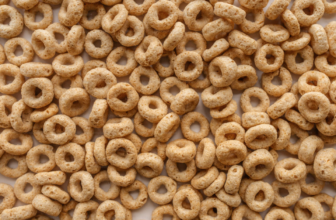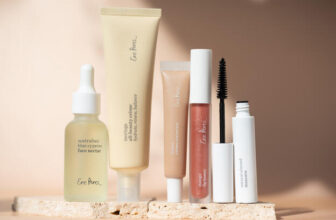
[adinserter block=”2″]
*Our test kitchen independently evaluates and reviews products for the OA community. If you click on the links provided, we may receive compensation which helps to keep the lights on. Learn more.
You want to know how to keep your eggs from sticking, but you’re iffy about nonstick cookware, we get it. It’s no secret that most nonstick pans are far from the best choice in the kitchen.
Unsplash
Despite all of the confusing verbiage and non-toxic promises, most nonstick cookware is coated in perfluoroalkyl substances (PFAS), “forever chemicals” which not only emit toxic fumes when overheated but also can flake off into your food (double yuck). Read a deep dive into why most PTFE nonstick is unsafe. Plus, recent studies have shown that PFAS can affect metabolism, and past studies have linked them to immune problems and even cancer. So yeah, most nonstick cookware is as bad as you think (as are most storage containers which is why we love Caraway’s food storage).
Is A Nonstick Pan Worth It?
Food sticking to a non-nonstick surface seems like a small price to pay for our health, but it can indeed be aggravating.
It can sometimes seem that by choosing healthier cast iron or carbon steel, we’ve relegated ourselves to a world in which scrambled eggs (here’s a guide to scrambled eggs perfection) will always leave something behind, and fish will always tear instead of being plated in a perfect fillet. Though it should be said that we have several chef-tested and reviewed breakdowns on incredible non-toxic cookware and nonstick bakeware.
Want more top tricks and picks? Sign up for the newsletter for more well-researched, non-toxic living guidance and smart wellness advice.
Mastering the Right Cooking Technique Is Your Solution
In reality, however, all it takes is the right techniques to make your pan release your eggs, fish or anything else you may be cooking.
Here’s How to Prevent Eggs & Fish from Sticking to Your Cast Iron or Carbon Steel Pan
1. Start with a Well-Seasoned Pan
The benefit of nonstick is that it doesn’t need to be seasoned, but the dangerous price really isn’t worth the convenience. When it comes to other cookware, particularly cast-iron, seasoning is your best friend.
Seasoning a pan properly essentially involves heating the pan and greasing it with fat repeatedly until the surface is glossy and smooth. The time-honored technique can be a bit time-consuming, but Cook’s Illustrated highlighted another possibility – greasing the pan with flaxseed oil and heating it in the oven – that is quite a bit easier and allows you to set and forget your pan while you do other things (always an added bonus).
Have a specific food sticking question? Leave it in the comments and Laura (trained chef and editor in chief) will help you out! Your tips and tricks are also very welcome!
2. Use Temperature As Your Teammate
There’s no secret to cooking in a pan: heat your chosen fat and add the food… right?
Not exactly, according to Bryan Roof, senior editor of Cook’s Country Magazine – at least, not if you want your food to release easily.
“The key is always hot pan, cold oil, and then you add the food,” he says. “The oil should just barely smoke and/or shimmer on the surface of the pan.” (You can read our deep dive into the importance of the shimmer here.)
This technique, as opposed to heating the pan with the fat in it, allows the food to release much more easily (and keeps your fat from burning (which is bad) – an added bonus).
Once the food – fish, a fried egg, or a scramble – is added, leave it alone for a few minutes before attempting to stir or flip. According to Roof, the moment you’re waiting for is when “you start to see some of the crustiness along the bottom edge.”
This shows that the food is forming a crust, which will allow it to release from the pan naturally.
3. Take Advantage of Residual Heat
As a home cook, I often use residual heat as a tool. When I roast vegetables, for example, I turn the oven off a bit before they’re done, letting what heat is left do the final work (btw, ceramic cookware is amazing for heat retention). This not only allows me to save electricity, it also grants me a bit more wiggle room when it comes to the perfect moment to serve.
Somewhat accidentally, however, I’ve noticed that this is a great way to keep food from sticking as well.
When preparing my breakfast fried eggs, I often pull them off the heat a bit before the whites are perfectly set and let them rest in the pan while I pour my second cup of coffee or put on my makeup, only moving them from pan to plate once they’ve been cooling for a minute or two. In the time between when the eggs were over a high heat and when I get back to them, they have released, almost by magic, from the surface of the pan.
This, according to Roof, is no surprise.
“As a piece of protein rests, there’s liquids that come out of it and redistribute,” he says. “It almost kind of allows it to deglaze itself and kind of free itself from the bottom of the pan as the moisture kind of comes out.”
This technique works well with less delicate proteins, like chicken, pork, tofu, or salmon. Thinner or less fatty fish like haddock or cod, however, can quickly become dry with this method. But that doesn’t mean you can’t use the residual heat to keep them from sticking, too.
“With something that cooks so quickly, you don’t really need to flip it in the pan,” Roof says. “You risk flipping it before the first side has a crust and would naturally release from the pan.”
He suggests, instead, cooking leaner fish all on one side. Cover the pan with a lid to trap some steam before removing the pan from the heat; this will allow the fish to cook all the way through without ever having to flip – or deal with it sticking.
4. Use the Right Tools
The right spatula can make or break your meal, literally. The wrong spatula will tear your food rather than lift it, forcing you to serve jagged morsels of fish rather than one beautiful fillet, or breaking your egg yolk before it hits the plate.
Roof recommends investing in a good fish spatula, which has the right shape for getting under food with ease.
A fish spatula’s design, he explains, allows you to put pressure on the skillet rather than the food.
“The idea is to just press the spatula against the skillet, and just let the upper portion of the spatula kind of create a wedge and release the food,” he explains.
An added bonus of using this technique with cast-iron is that the pan will not scratch.
“You may get what looks like a scratch in it, but you’re not peeling metal off,” Roof says. “If have a seasoned pan, you’re probably taking a little bit of the fat that’s on there and peeling that off.”
5. Don’t Be Intimidated By the Papillote
Not all foods are well suited to pan-searing, and that’s fine! If the food you’ve chosen is particularly delicate, like sole, using parchment or foil to create an environment in which the food can steam is a great option.
While many recipes call for doing this in the oven, it is possible to use this technique on the stovetop. Choosing this method will allow you to infuse your chosen protein with flavor – and save you quite a bit of time on cleanup.
P.S. Did you know? Organic Authority has its own nutrition and wellness shop to meet your needs and help you take control of your health. Shop clean supplements for energy, sleep, inner beauty for skin support, protein, workouts, pantry items and more. Shop The Organic Authority Shop now.
Read More on Organic Authority

The FDA says Melamine is Safe With One Big Caveat
GreenPan’s Non-Toxic Nonstick Cookware was First—And It’s Still Our Go-To
3 Reasons Cast Iron Cookware Will Change Your Life Forever
*Our test kitchen independently evaluates and reviews products for the OA community. If you click on the links provided, we may receive compensation which helps to keep the lights on. Learn more.
[adinserter block=”2″]
Source link






